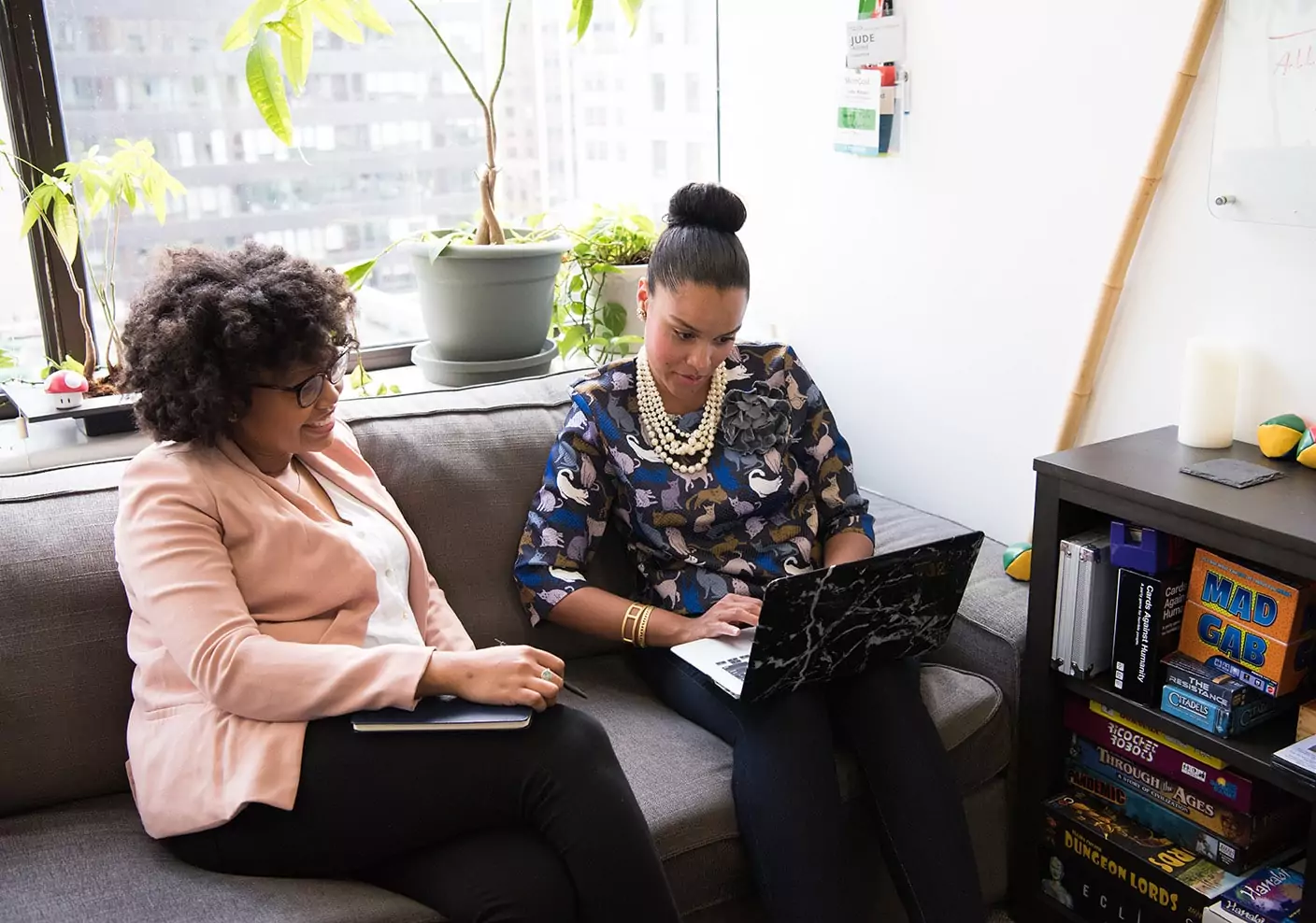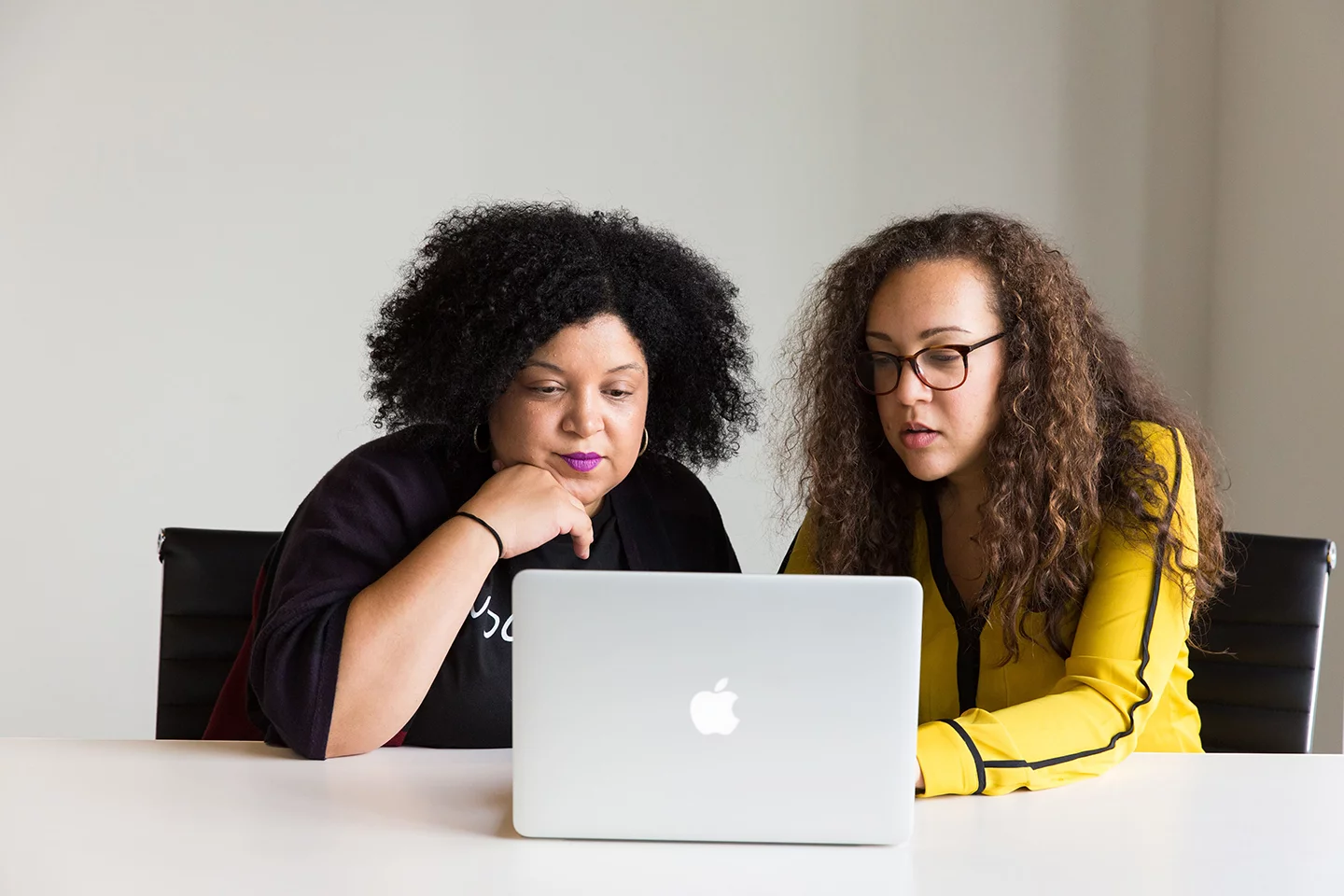Mursion’s Future of Work Roundtable Series recently continued with “Referability in HR: How to Connect Deeply, Curate Your Community, and Champion Your Most Important Ideas.” In this session, Michael Roderick of Small Pond Enterprises walked us through frameworks that help us deepen our existing relationships, identify archetypes in our offices and within ourselves, and, most importantly, highlight the three crucial factors in having people share and implement our ideas when we’re not there.
What follows is an excerpt of Roderick’s presentation. To see the full Roundtable session, including a demo of Roderick participating in a live Mursion demo, visit our YouTube channel. Join us for our upcoming Future of Work sessions by signing up here. And, to experience Mursion’s virtual reality simulations and see for yourself how this platform can support your own business to achieve its leadership development and other business goals, schedule a demo today.
“I have spent a large amount of time studying referability in HR, actually asking the question about why do people talk about us and our ideas when we’re not in the room in a good way. I’m going to share a number of frameworks that I have built around this idea of referability and help you look at ways that you can connect deeper with the people within your community.
Referability, the easiest way to think about this is in the sense of taking aim. Referability is going to focus on accessibility, influence, and memory. The first question that you always have to ask is, are you being accessible? Can people understand what you’re sharing, what you’re asking them to do? Do they feel comfortable and willing to be around you?
The next aspect is influence. You want people to do the things that you would like them to do, whether it be share the message, follow a directive, make things happen, you want them to do that. We’re going to talk about influence and how we think about the idea of influence, and what causes folks to actually do these things.
Then finally, what we’re going to cover is the idea of memory. Very often, we spend so much time thinking about how we’re going to tell the story that we don’t spend enough time thinking about how somebody else would retell the story.
Relating Beyond the Professional
I’m going to move right into this aspect of building deeper relationships. Most of the time, what tends to happen is that in our discussions, especially when we are in more formal discussions, when we’re in more work types of situations, we tend to put a large amount of weight on the professional. We’re almost always talking about the things that tie to our careers.
The most common question that you’re going to encounter in a new social situation, especially if it’s a business-oriented social situation, is what do you do. In many cases, there’s so much more that we can dig into. If you are engaging with other people within your office and you find that you’re only ever talking about the professional, this is going to give you some other directions that you can potentially go in ways of deepening these conversations.
This works whether you are talking about having more conversations with employees, potential partners, or referral partners within your network, people who you want to support and who you want to help. It’s also just at the very heart of it understanding this and really being thoughtful about these particular points can make it so that your conversations are just so much richer. One of the byproducts of having a rich conversation with somebody, as opposed to a surface conversation, is that they then remember that experience.
One of the byproducts of having a rich conversation with somebody, as opposed to a surface conversation, is that they then remember that experience.
There is an emotional connection to having a conversation with you. They remember it fondly and they want to have more of those conversations. If we get beyond the professional, the next thing that we go into is the personal. We don’t have to be hyper-personal like asking people about what are your deepest darkest fears or any of those types of things. What we can do is we can address some of the basic personal things like where is this person living? What types of shows do they enjoy? Are they a dog person? Are they a cat person? Just all of these little things.
The aspect of this is these are touchpoints, and these touchpoints become really powerful tools for conversation later. Very, very often when we start to understand things about people, we can then bring that into other conversations to start to basically develop a whole other sense of rapport. It’s really important to ask, do I know anything personal about the people who I’m working with?
Beyond that aspect of personal, there’s the inspirational. I said at the very beginning that the most common question people ask is, what do you do, but so so rarely does anybody ever ask, why do you do it? What inspires you? What excites you about this work? There are so many times where you can have a conversation that just seems to be going nowhere, that’s an absolute dead end, and you turn it into, well, why are you interested in this? Why is this so exciting for you? It can really just reignite it and move it in a whole different direction.
The next one is the aspirational, which is, where does this person want to go next? What are they trying to do next? What are their goals? This is really important because if we have an understanding of what people’s next steps are, and what they’re trying to accomplish, and what they’re trying to do, then, we can basically be looking at the world through their eyes. We can find connections, opportunities, people to help them, people to support them.
The last category is the problematic, which is what is something that they are struggling with. There’s a really important point to the fact that I left problematic until the end because it’s very, very hard to feel comfortable, feel close to somebody if you haven’t taken the time to really tap into these other things.
Archetypes of the Office
Let’s talk about the archetypes of the office. It’s really, really important to understand that they exist and to understand where you fit into that archetype and what you’re going to do. The first archetype in the ocean of the office are the sharks. The sharks are the people who it is all about them, they want you to know their successes, they want you to know how great they are. They dominate conversations. If you’re in a meeting, they basically take over and you can’t get a word in edgewise. These are the people who, they have just this very strong personality that steamrolls everybody else.
Conversely, you have the dolphins, and these are the people who love to cluster together in their groups. They don’t really want outside opinions because they’ve found each other. You’re going to see the people clustering together and actually not letting folks into their circles. This happens virtually as well, where you will literally see people connecting with each other and excluding others.
That leads to this next category, which are those who are drowning. In many cases, these people are not going to just come out and say that they’re struggling. That’s where the last category, the last archetype that comes in is so important, and that is the lifeguard. The lifeguard is always looking at the situation and asking what is going on? Who is drowning, who is clustering together, who is being left out, who’s being attacked by a shark, and they’re paying attention to that.
If you approach your work from the standpoint of the lifeguard, and you look for these archetypes, you are going to not only be able to address things when they come up and be more prepared when you’re addressing them, but you’re also going to develop deeper connections with people.
If you approach your work from the standpoint of the lifeguard … you are going to not only be able to address things when they come up and be more prepared when you’re addressing them, but you’re also going to develop deeper connections with people.
Take these archetypes, start to think about them. Ask yourself, ‘Do you see them in your office? Do you see them in yourself?’ and really start to think about how are you being proactive in these conversations, deepening these conversations, making it more of a relationship-focused world for yourself in the work that you’re doing.
The ABCDs of Organizational Culture
The next thing I’m going to talk about is this aspect, I call this ABCD. Everybody has a very specific driver to themselves and you may find that as I talk about these categories, that there is a driver that really stands out for you. Again, understanding these drivers in people can really help you know how you’re going to approach them and how you’re going to deal with them.
The first category that you’re going to deal with are the advocates. Advocates are people who, they love to help, they love to support, they do everything that they possibly can for everybody else. The challenge is that advocates are awful at advocating for themselves. They’re wonderful at helping others, they’re wonderful at jumping in and taking care of things, but they are usually the ones who will never come to you and let you know what it is that they need.
It’s important when you identify advocates, or when you see yourself in this advocate role, that you make sure that you are communicating your challenges and your problems and your needs to others. If you know that there are advocates in your network, they’re probably not going to come to you and say, ‘This is what I could use help with,’ or, ‘This is where I could use some support.’ You’re going to have to be proactive and go to them. That’s just the dynamic of the advocate.
The next category you’re going to encounter are the boomerangs. The boomerangs are the individuals who are very very transactional in nature. These are the people who, if you are going to want them to do something, they want you to do something in return. Everything is a back and forth, everything is a transaction.
If you’re coming to them, and they have that boomerang mentality, then you are going to have to think ahead of time about, how is it going to serve them? What is it going to be to help them, otherwise you’re going to get pushback. Transactional people, they’re always looking for that reciprocity, so it’s important to understand, what is that dynamic? If that person has that dynamic, how are you preparing for it? How are you thinking about it?
The next category are your celebrities. Your celebrities are the people who, they really just have no regard for time or for rules because they’ve become so popular. Everybody knows them, everybody loves them. When you’re dealing with celebrities in your circle, they follow a shark type of thing, because it is all about them, so you have to make sure that you’re paying attention to the social dynamics that are at play.
Those are the people who you’re going to need to make sure that you’re giving them clear boundaries. If you have a celebrity, if you have somebody who’s just really likable, and everybody lets them slide, that person is just going to slide forever if there aren’t boundaries, if there aren’t things that you create, and build out.
Then the last category are the drains. These are the people who, they’re in such a high state of need. They’re in such a high state of frustration that they can’t even think about the idea of doing anything for anybody else or helping anybody else out because they’re just at the highest state of need.
Now, what’s really important to understand is that this is not to say that a drain is the last category and these are the bad people in the office. Every single one of us at some point in our life has had that as the driver. We just weren’t in a state to really give, we really were just in a state to receive. The most important thing to understand if you encounter somebody who falls into that drain category, who you find you were always taking time with them, you were always dealing with the issues and the challenges, and it feels like they’re just always on your ledger, is that there is a fine line between helping and enabling.
It is so important when somebody hits that drain capacity, to give to give them tools to help themselves. Don’t put it all on yourself because if you say, ‘I’m going to fix this for this person,’ you will basically train them to believe that you will fix everything for them.
You always want to give people the tools to be successful. You don’t want to try to force someone to be successful, push someone into being successful, especially if they’re in that drain state. The other really important thing is, there are moments where we fall into this drain state, it’s really important to just be conscious of that. For some people, they may be in that drain state because they’re going through something at home. Again, going back to that personal, inspirational, aspirational, problematic, the more that you understand, the more you understand the state of mind that these people are going to be in.
Creating Effective Communication Strategies
The communication is going to change depending on the archetype that you’re dealing with. Everything changes, the language that you use, the way that you approach. So many things shift when you have this understanding. When you take the time to develop this understanding ahead of time, you basically have a cheat sheet for people, and you have a much better understanding for yourself of where somebody is coming from and you can plan for more of those challenges and more of those issues.
When you take the time to develop this understanding ahead of time, you basically have a cheat sheet for people, and you have a much better understanding for yourself of where somebody is coming from and you can plan for more of those challenges and more of those issues.
That covers the aspect of accessibility. The one piece of influence I’m going to share is that one of the most important things to understand is that most of us get influenced wrong. Most of the time when we think of influence, we think about it in the context of persuasion, ‘How am I going to push somebody to do something? How am I going to get them to make something happen?’ Really true influence is when people do things and we don’t ask them to. True influence is when they are motivated to do the things that we would want them to do by what their own successes and what their own ideas are.
It’s really important as you’re thinking about this aspect is saying, ‘If I’m putting together an initiative, if I’m putting something forward, how is it going to make the person sharing it look? How will they feel when they share this idea when they talk about this thing? What will it do for them?’ The more that you put yourself in that mindset of asking, how is this going to support or help the other person, the person sharing the idea, the person implementing the tool, the person going with the program that you’re recommending, the more likely they’re going to share it because there is that intrinsic reward that they receive from that experience.”
Subscribe for the latest Mursion articles and updates.
By clicking the sign up button above, you consent to allow Mursion to store and process the personal information submitted above to provide you the content requested. View our Terms and Conditions.




